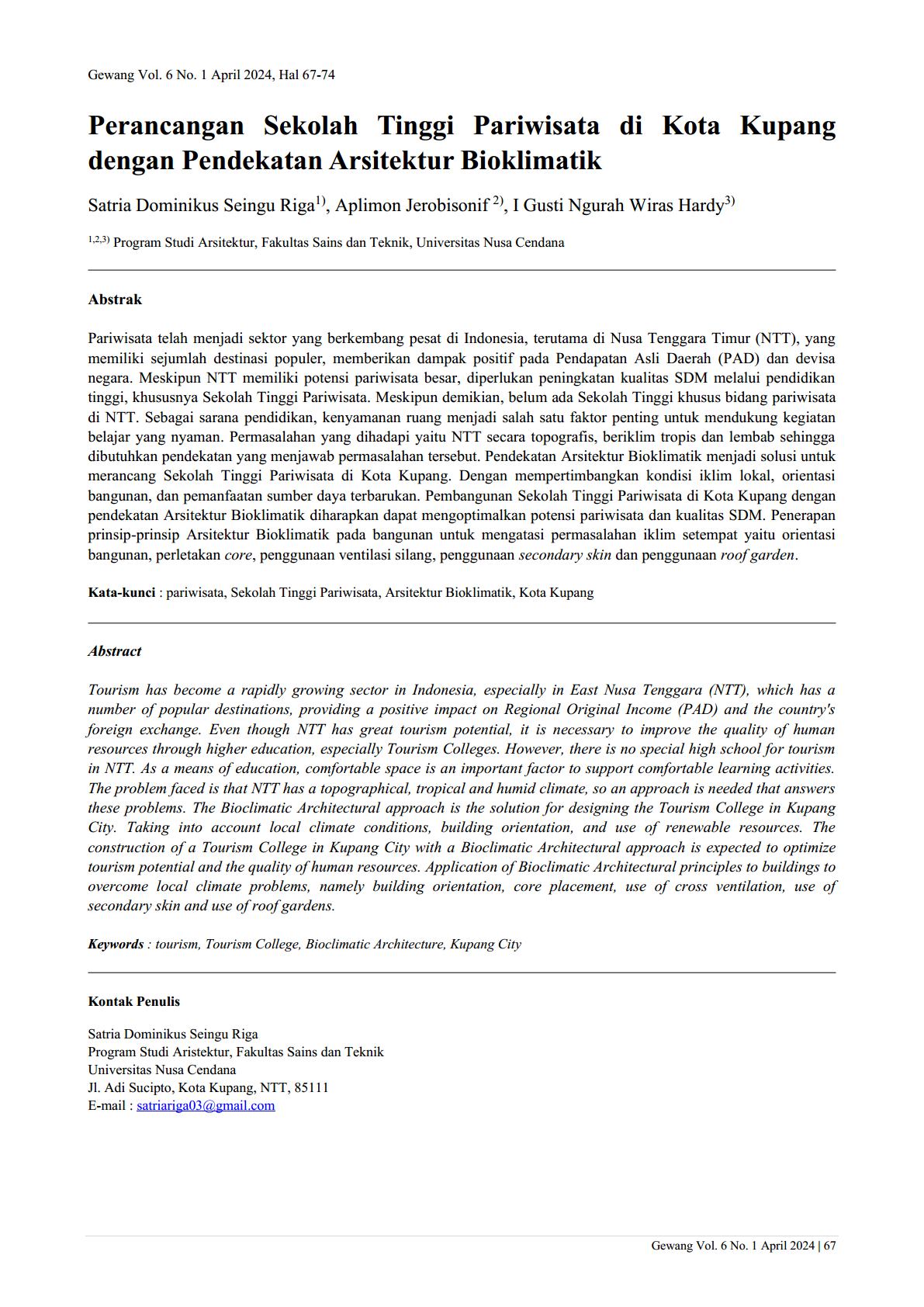Perancangan Sekolah Tinggi Pariwisata di Kota Kupang dengan Pendekatan Arsitektur Bioklimatik
Main Article Content
Abstract
Tourism has become a rapidly growing sector in Indonesia, especially in East Nusa Tenggara (NTT), which has a number of popular destinations, providing a positive impact on Regional Original Income (PAD) and the country's foreign exchange. Even though NTT has great tourism potential, it is necessary to improve the quality of human resources through higher education, especially Tourism Colleges. However, there is no special high school for tourism in NTT. As a means of education, comfortable space is an important factor to support comfortable learning activities. The problem faced is that NTT has a topographical, tropical and humid climate, so an approach is needed that answers these problems. The Bioclimatic Architectural approach is the solution for designing the Tourism College in Kupang City. Taking into account local climate conditions, building orientation, and use of renewable resources. The construction of a Tourism College in Kupang City with a Bioclimatic Architectural approach is expected to optimize tourism potential and the quality of human resources. Application of Bioclimatic Architectural principles to buildings to overcome local climate problems, namely building orientation, core placement, use of cross ventilation, use of secondary skin and use of roof gardens.
Downloads
Article Details
This license enables reusers to distribute, remix, adapt, and build upon the material in any medium or format, so long as attribution is given to the creator. The license allows for commercial use

